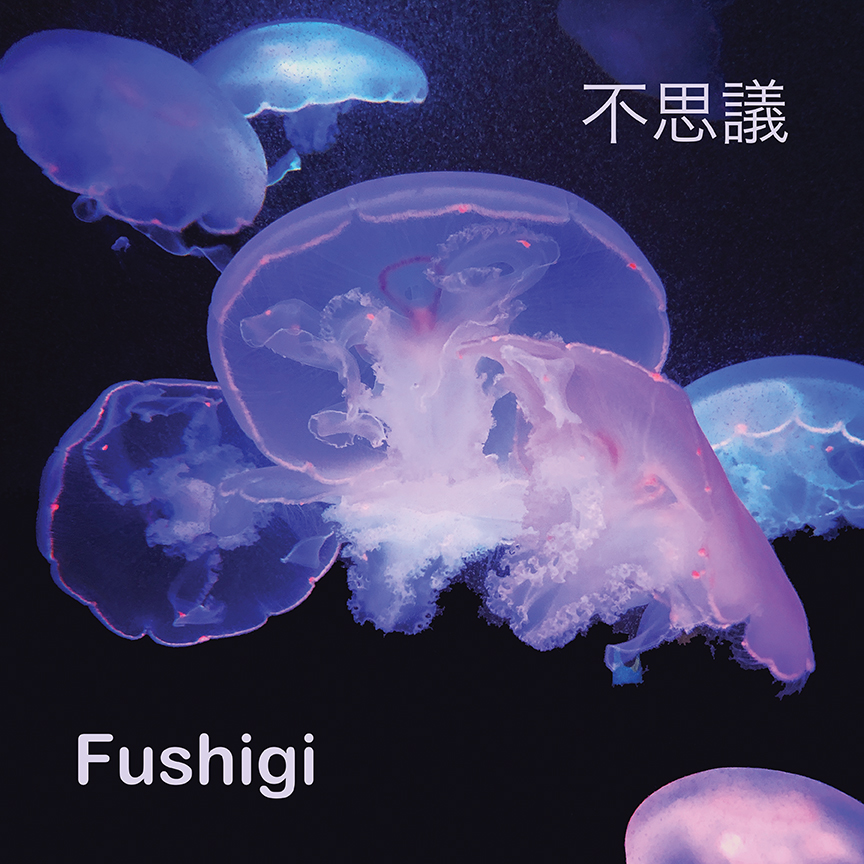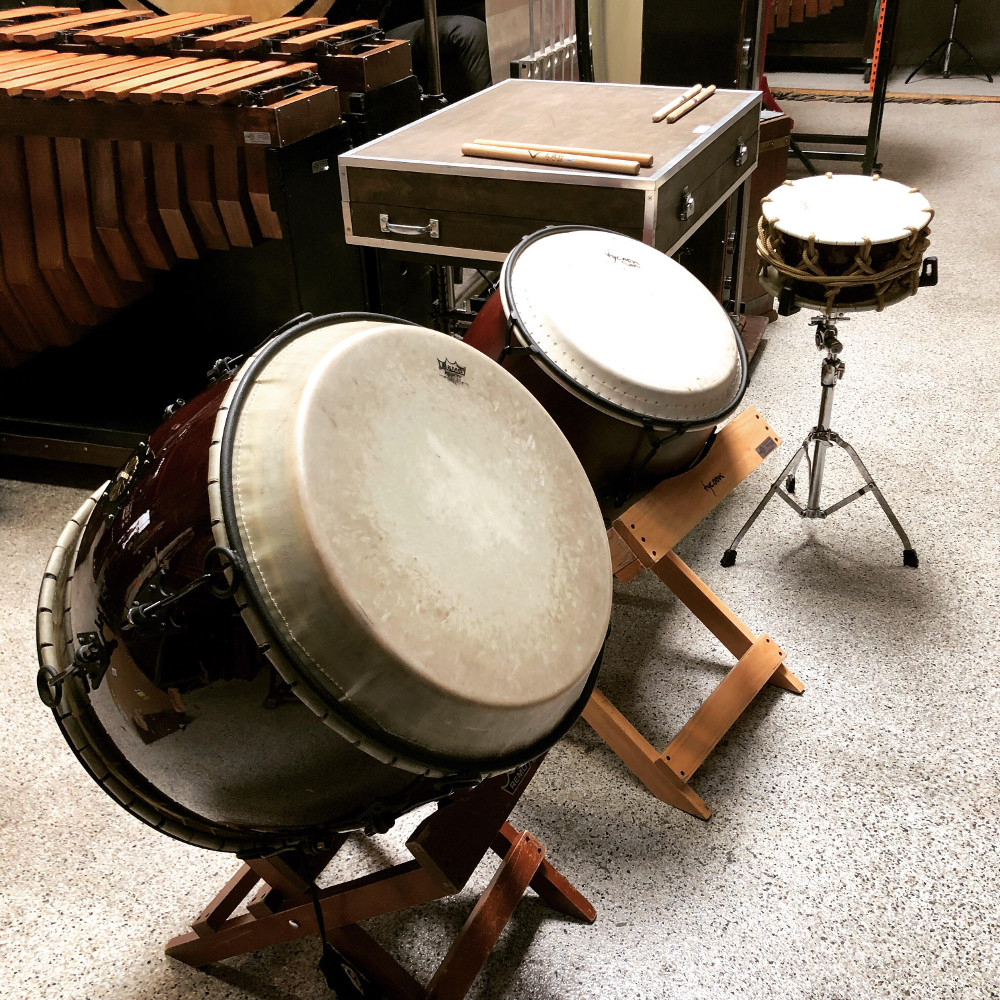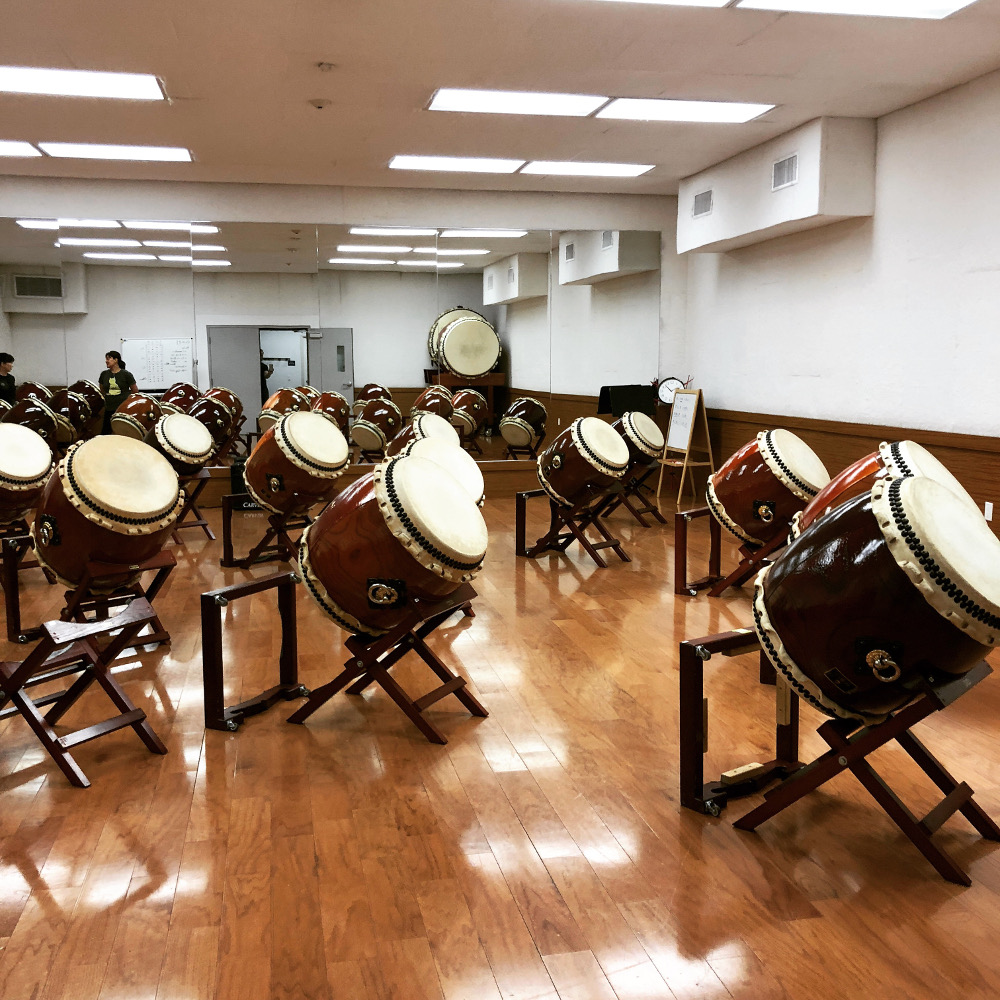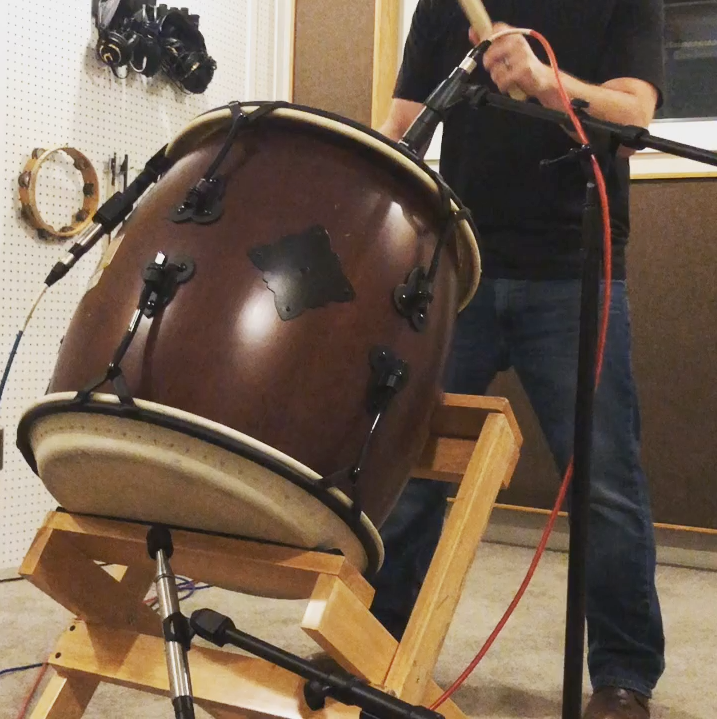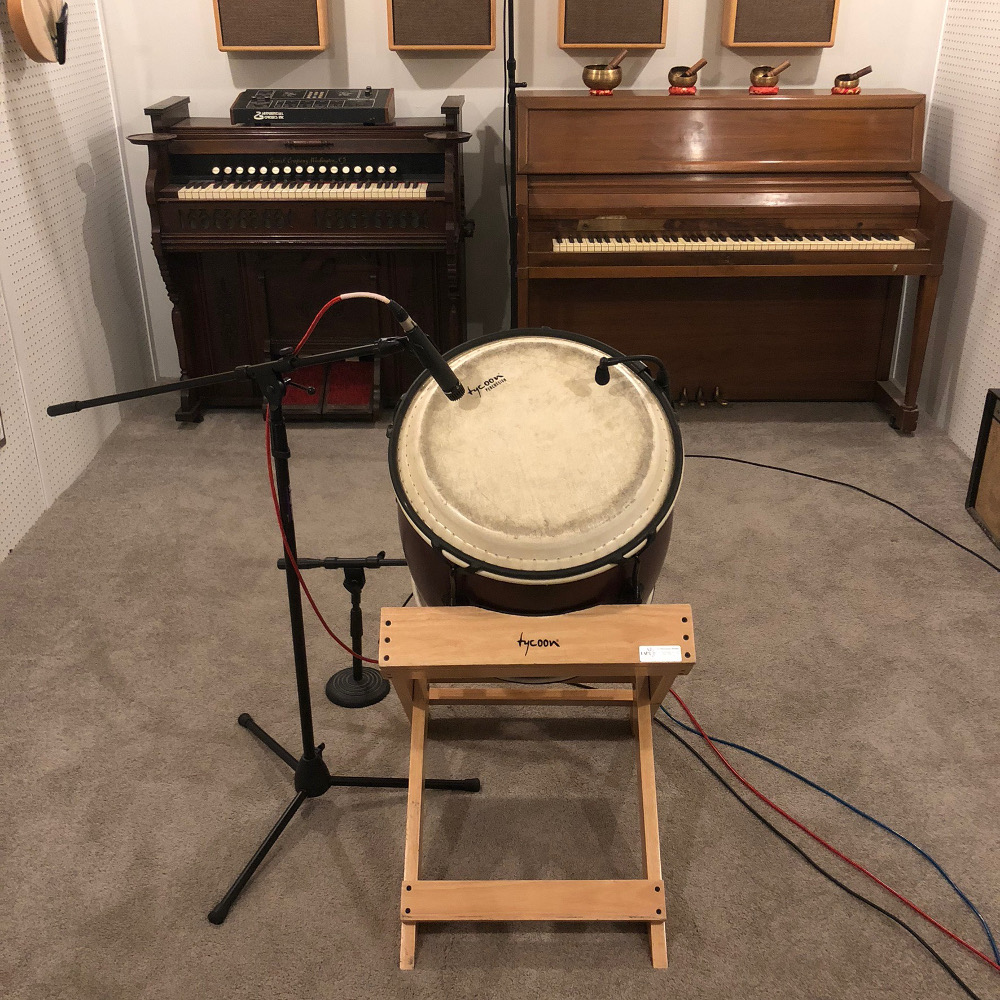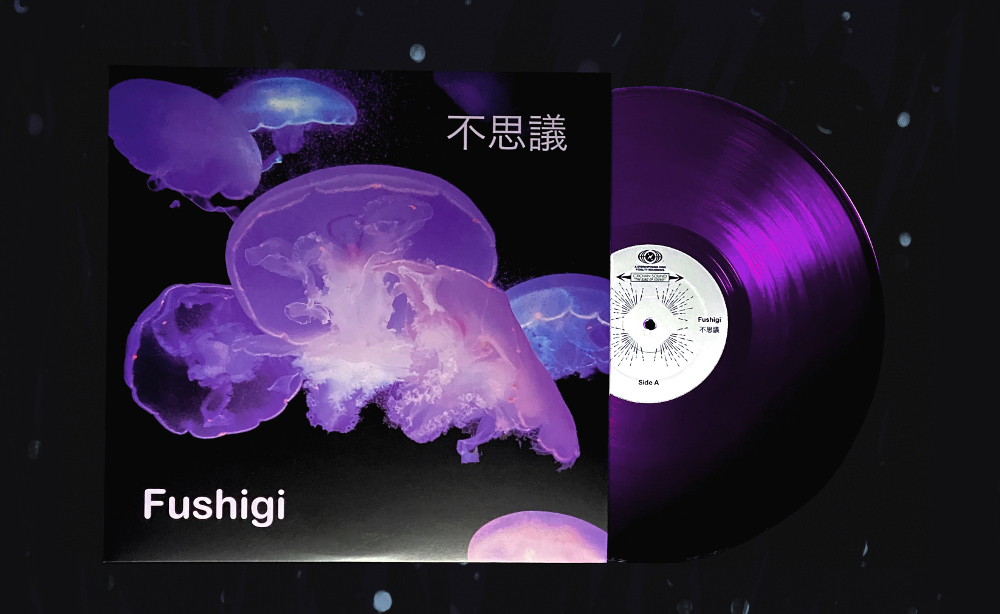Studio Adventures: Taking on Taiko Drum Recording
Film, television, and video game composers like myself are often asked to create scores that incorporate musical instruments and genres we are not experienced with. It’s a challenging, but fun part of the job. After working on the Netflix series Street Food Asia, I became interested in learning more about traditional Japanese instruments.
I decided to write an album of original music incorporating Japanese instruments and players as way to familiarize myself — a hands-on approach that allowed me the time and freedom to experiment. My goal was not to create Japanese music or my impression of Japanese music. My goal was to engage Japanese instruments to inform my writing process and to learn more about their potential along the way.
The result of that experimentation is Fushigi, an instrumental concept album conceived to be enjoyed on vinyl. Side A is an imagined underwater journey across the Pacific Ocean from California to Japan. Side B is an exploration of my memories of visiting Japan. The album is available in a limited edition translucent vinyl format via the Silas Hite shop as well as all streaming platforms.
The album features many of the wonderful string and woodwind session players I often use on my albums and soundtracks. In addition, I worked with koto player Saeko Zirkelbach Kujiraoka, and shamisen player Mike Penny. They helped me understand the capabilities of their instruments and graced Fushigi with some beautiful performances. But for the purposes of this article, I am going to focus on my experiences working with taiko drums.
Pre-Production
My favorite way to learn about instruments is through hands-on experimentation. I knew that I would eventually hire session players to record the koto and shamisen parts, but I thought perhaps I could handle performing the taiko parts. I’ve been a drummer since I was eleven and I perform all the drum and percussion parts on my scores and albums, so I figured I had enough experience to draw from.
I began by locating the instruments I wanted to work with. I did a bit of Googling and discovered LA Percussion Rentals offers a large and affordable selection of taiko drums that I could rent for recording.
Next, I found a taiko school called Taiko Asano U.S. They offer group and private lessons, and even build and sell taiko drums on the premises! I found a beginner group class and eagerly signed up.
After a short tour of the Taiko Asano U.S. workshop where they build the drums (very cool!), I learned how to properly hold the sticks (called bachi), some playing techniques, and a bit about the history and design of the drums. I spent about an hour learning rhythms and performing with a group of roughly fifteen other players. The sound of all those drums in one room was tremendous!
These were my major takeaways from the lessons:
- The taiko sound I was most familiar with was a large ensemble sound. Multiple drummers play at once, not a solo drummer performance. I realized I might have to replicate this somehow to capture the sound on my album.
- There are two main areas to hit a taiko drum. The middle of the head, which gives you a deep boom, and the rim, which gives you a loud resonant click.
- There are other drums that accompany the taiko drums. My favorite is called a shime daiko. It is similar in size and shape to a snare drum, but with skin heads and rope tension. The timbre is somewhat akin to a snare drum with the snares disengaged.
- Special sticks known as bachi are used play the drums. The taiko drums are played with large wooden bachi, which are much fatter and heavier than most drumsticks. The shime daiko is played with a smaller version of those sticks, but they are still fatter than most drumsticks.
After my lesson, I felt very inspired and returned to my studio to continue writing my album. I used sample libraries to mockup the taiko and shime daiko parts I would eventually replace with live performances.
As a final pre-production step, I began asking my engineer friends if they had any experience or tips for recording taiko drums. My good friend Robi Kauker has had far-ranging audio adventures as a musical artist and as an Audio Director at Electronic Arts, one of the largest video game companies in the world. I’ve had the pleasure of collaborating with him on many scores for The Sims games over the years and I always walk away with interesting bits of audio advice.
Regarding the recording of taiko drums, he suggested using multiple mics to ensure that I would capture a sound I liked. He mentioned that in his experience, getting the right sound from only one microphone could be a challenge. That turned out to be excellent advice!
Production: Taking the Taiko Into the Studio
Once I completed the writing and arranging of the album, I visited the good folks at LA Percussion Rentals. The entire staff is very friendly and knowledgeable, and I love visiting their warehouses. I rented a shime daiko and the largest taiko drum that would fit in my car!
Later I returned and rented a few orchestral crash cymbals for the larger ensemble pieces on the album, such as “Welcome to Japan”, the epic introduction to Side B of Fushigi.
Instrument rental companies all have different rates and rental periods ranging from a few months to just a day. I had absolutely no prior experience recording these instruments, but I felt confident that I could accomplish all the recording in one afternoon, even leaving time for experimentation. And I did.
This was my recording chain: I ran an Earthworks SR-25 and TC-25 into my 2-channel Neve 1073 DPA mic-pres. The Shure SM-57 and Earthworks DP 30/C were plugged into the built-in Apogee Ensemble mic pres. That same Apogee Ensemble serves as my audio interface. It connects to my trashcan Mac and then into my DAW, Logic Pro X.
First, I pointed the Earthworks SR-25 and its accompanying KickPad at the bottom of the taiko. This mic is my go-to for recording kick drums. I love the low-end thump that it captures, so I thought I’d use it in a similar fashion for the taiko.
Second, I pointed a Shure SM-57 at the head to capture the attack of the stick, much like I would a snare drum.
Third, I attached an Earthworks DP 30/C with a telescoping arm to the rim of the taiko. This mic is an Earthworks tom mic, so I used in a similar way here. The mic captured the natural wooden sound of the drum very nicely. Unfortunately, the mic clamp was designed to grip a metal tom hoop, which is much smaller than the rim of the taiko. As a result, once I started aggressively playing, the mic clamp would begin to lose its grip and move around. I liked the sound of the mic, but it just wasn’t the right tool for this job.
Fortunately, I felt I was getting a good “close” sound from the first two mics, so I simply unhooked it and moved on. For the record, when used on conventional toms, the mic clamp and microphone work extremely well.
My fourth mic was an Earthworks TC-25 room mic, positioned about 6 feet away from the drum and about 6 feet off the ground. This mic beautifully captured plenty of room sound.
Here are a few things I discovered during the recording process.
- Bachi are very heavy, making quick rhythms difficult to perform on the taiko drum. Shime daiko was easier for fast rhythms.
- Taiko drums have a long ring out, an attribute worth considering when arranging to avoid muddy mixes!
- The rim clicks are very loud. I ended up recording them separately to make mixing easier.
Post-Production: Lessons in How to Mix Taiko Drums
When it came time to mix and produce the taiko recordings, I was again faced with my own inexperience. This however, is what keeps mixing and producing interesting to me, and I had a great time tinkering with my recordings to get results that I love.
Here are a few things I did to get there:
The SR-25 kick drum mic sounded great. Very natural with lots of body. However, I wanted the taiko to sound even more powerful, almost larger than life. In Logic, I used the built-in compression and SubBass plugins to give the drums an even bigger, deeper sound.
The SM-57 sounded fine, like an expected tom sound with plenty of attack. No problems there, so I left it alone.
The TC-25 room mic had a very nice, clean tone to it. A pair of these are almost always my go-to overhead drum sound, so I knew I could count on getting that same result in this situation. Again, I was happy with this sound so I left it alone.
I added gentle compression to each track, rolled off frequencies below 20k, and added some reverb from my Altiverb plugin. I blended the sounds of all three mics together to achieve the final sound on the album.
The only unexpected production choice (at least in my mind) is what I did with the room mic. When I took taiko lessons it occurred to me that I was accustomed to hearing an ensemble sound, rather than a single drummer. I decided to play with this idea by lining up some of the close mic hits to the grid in Logic, while leaving the room mic recording unedited. This created a small amount of sloppiness in the performances.
Normally making something sound sloppier would not appeal to me, but in this instance it created the illusion of having multiple people playing at the same time! I used this technique a few times on the album when I needed a bigger, group sound. Some tracks were more intimate, so I simply used the original performance that sounded like one player. Because I used extra mics when recording, I had the luxury of having more production options.
My Taiko Recording Adventure: All Told
In my taiko recording session I was clearly drawing from my experience playing and recording drums and percussion. I simply used that knowledge and experience and applied it to recording taiko.
As my good friend, composer and engineer John Enroth once told me, “Take what you know, apply it to what you don’t know, and figure it out.” I often think of that advice when faced with new challenges. I was very happy with my first taiko performances and recordings. So happy, in fact, that I ended up adding two tracks to the album that were improvised recordings made entirely of taiko and shime daiko!
Creating Fushigi pushed me out of my comfort zone, fueled my creativity, and better equipped me for working with Japanese instruments and players in the future. I hope this article has inspired you to learn about new instruments and their possibilities. Don’t be afraid of what you don’t know. With a little desire and effort, you can open the door to a new world of sonic possibilities.
Silas Hite is an Emmy Award-winning freelance composer. Visit him at SilasHite.com.
Please note: When you buy products through links on this page, we may earn an affiliate commission.







